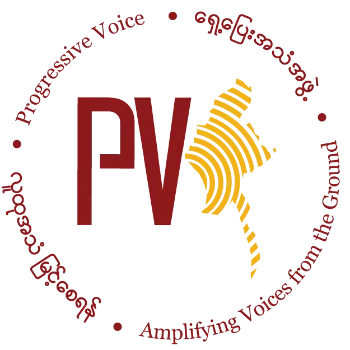Keyboard Fighters: The Use of ICTs by Activists in Times of Military Coup in Myanmar
11 May 2024
INTRODUCTION
In recent years, the use of information and communication technologies (ICTs), particularly social media (SM) and instant messengers, during political crises have received increasing scholarly attention, including from the HCI community. In the early 2010s, the prevalence of ICTs became evident during widespread protests, including those that swept across much of the Arab world. Both activists and authoritarian actors skillfully harnessed technology’s potential for multiple objectives, such as protest organization, gaining international attention, and surveillance. Since February 2021, many citizens from Myanmar have been using SM and instant messengers to protest against the military coup. The protest movement, locally also known as “Spring Revolution”, emerged right after the military took over power and state counselor Aung San Suu Kyi was detained. After the elections in 2020, the first legislative period of the democratically elected party, the National League for Democracy (NLD), was to begin on February 1st, 2021. On this day, the Sit-tat, the armed force under Min Aung Hlaing, staged a coup, claiming electoral fraud by Aung Sang Suu Kyi’s NLD. In response, mass protests were organized across the country, primarily by young people. Compared to previous protests in Myanmar (e.g., 1988, 2007, and 2015), information about the mass protests were now being spread (inter)nationally via SM, although hampered by blocked websites and internet shutdowns by the military. Young people are “Myanmar’s first generation of digital natives who participate and shape their identities in communication and dialogue with global digital media content”. With both the military using ICTs to consolidate control and civil society using it to gather information and as a “natural place for opposition”, the importance of ICTs, particularly SM, becomes highly evident since the coup.
To date, in contrast to numerous studies on e.g., the MENA region, little research on Southeast Asia, including Myanmar, has examined the complex landscape of technologies used and the capabilities required to use them. Additionally, while existing studies in this region have primarily focused on Facebook (FB) and Twitter (known as X since July, 2023), relatively little research has been done on the use of instant messengers like WhatsApp and Signal during protests, as well as activists’ technical requirements in conflict driven contexts. Building on this foundational perspective, the following research questions (RQs) will be addressed:
- How are ICTs used by protesters as a resource for mobilizing virtual and analog protests in the anti-military protest movement in Myanmar in 2021?
- What opportunities and challenges are encountered in the use of ICTs and how do protesters in Myanmar deal with them?
- What technical requirements are identified by activists in times of protest?
Since the conditions during the protests in Myanmar are highly dynamic, the insights provide historical snapshots that reflect the state of affairs around mid-2021. Based on a qualitative online survey (N=34) and qualitative interviews (N=16) with activists in Myanmar conducted only shortly after the coup and in the midst of the protests, the study, using the lens of Resource Mobilization Theory (RMT) and qualitative content analysis, examines protesters’ use of ICTs, especially regarding SM and messengers, how it has changed since the coup d’état, and how it has been used as an essential resource for mobilization. Furthermore, the study explores how activists adjust to varying circumstances, such as internet shutdowns and the implementation of a new Cybersecurity Law. Lastly, context specific recommendations for improving technology to enhance the security and connectivity of activists during instances of military coups and suppression will be provided. The study captures relevant dynamics in Myanmar and thus provides a crucial and empirical contribution to existing literature on ICT-supported activism.
Announcements
04 April 2025
Myanmar: Human Rights Council condemns the junta, responds to the earthquake, and calls to end sale and supply of arms and jet fuel
31 March 2025
သတင်းထုတ်ပြန်ကြေညာချက် – မြန်မာနိုင်ငံရှိ ငလျင်ဒဏ်သင့် သက်ရှင်ကျန်ရစ်သူများနှင့် ထိခိုက်ခံစားရသည့် လူထုများအတွက် သဘာဝဘေးအန္တရာယ်ဆိုင်ရာ ကူညီကယ်ဆယ်ရေးအတွက် အရပ်ဘက်လူထုအဖွဲ့အစည်းများတောင်းဆို
30 March 2025
Press Statement: Civil society calls for disaster relief for earthquake survivors and affected communities in Myanmar
17 March 2025
အိတ်ဖွင့်ပေးစာ – အထူးကိုယ်စားလှယ်၏ အကျိုးစီးပွားဆိုင်ရာ ပဋိပက္ခရှိနေမှုက စုံစမ်းစစ်ဆေးမှုပြုလုပ်ရန် နှင့် ၎င်း၏လုပ်ပိုင်ခွင့်အာဏာကို အဆုံးသတ်ရန် အရေးတကြီးလိုအပ်နေမှုကို ဖော်ပြနေသည်
17 March 2025
Open letter: Special Envoy’s conflicts of interest signal urgent need for investigation and complete end of mandate

Progressive Voice is a participatory rights-based policy research and advocacy organization rooted in civil society, that maintains strong networks and relationships with grassroots organizations and community-based organizations throughout Myanmar. It acts as a bridge to the international community and international policymakers by amplifying voices from the ground, and advocating for a rights-based policy narrative.